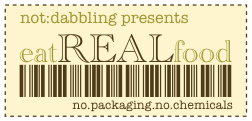 Despite gloomy forecasts, it was sunny and 60 on Sunday, so I was able to get out into the garden and some of that end-of-year work that’s been nagging. I managed to get a good harvest of leeks (watch this space for cream of leek soup, coming up in a couple of days), broccoli, parsley, and carrots, and mowed the lawn maybe the second to last time for the year. And then I just sat on my stoop and looked at the garden and thought, "this is the feeling that everything I do should give me. This is how good I want to feel about what I do in my life."
Despite gloomy forecasts, it was sunny and 60 on Sunday, so I was able to get out into the garden and some of that end-of-year work that’s been nagging. I managed to get a good harvest of leeks (watch this space for cream of leek soup, coming up in a couple of days), broccoli, parsley, and carrots, and mowed the lawn maybe the second to last time for the year. And then I just sat on my stoop and looked at the garden and thought, "this is the feeling that everything I do should give me. This is how good I want to feel about what I do in my life."Because working in the garden gives me a feeling of utter well being. Better than a pill.
Today's recipe is actually inspired by my bag-ripened tomatoes, and it's time to talk about how to make tomato sauce from the whole fruit.
Tomato sauce or puree from fresh tomatoes
To remove the skin, you need to blanche the tomatoes. Boil water in a 2-quart saucepan. When it's at a rolling boil, dip each tomato in, whole, for a count of 20-30 (or until the skin splits, whichever comes first). Remove it, and take the skin right off (it should just slip right off). Cut the tomato in quarters, and scoop out the seeds, set them aside with the skin (you'll make juice with these). Also core them, then roughly cut the remaining meat and put them in a second sauce pan.
Run the cores, skin and seeds through food mill, or just press them through a sieve if you don't have a food mill (although you should have one). You should end up with a nice red tomato juice, just poor this right back into the sauepan with the tomato chunks. Simmer this down to the desired consistency for either sauce or paste.
You can make about a quart of sauce from 6 large or 10 smallish tomatoes.
Tomato sauce with roasted bell pepper
 2 large bell peppers, different colors
2 large bell peppers, different colors1-2 pints of tomato sauce
4 medium garlic cloves, crushed and chopped
1/2 large onion, diced
4 bay leaves
1 Tablespoon dried oregano
1-2 teaspoons sugar if needed
salt and pepper to taste
To roast the peppers, cut them in half, remove the seeds and stem and roast at 400F/200C for 20 minutes or until the skin starts to brown. Remove from oven, remove the skin (should be easy) and dice.
Saute onion and garlic in a little olive oil, add the tomato sauce and simmer. After about 5 minutes, add peppers, oregano, and bay. Give it a taste and add remaining flavorings. The roasted peppers give this sauce quite a sweet taste; I liked it better with a little sugar added, so that the tomato also leaned to the sweet rather than the acid side. For a really sweet sauce, add a pinch of baking soda.
Serve over your pasta of choice.
























